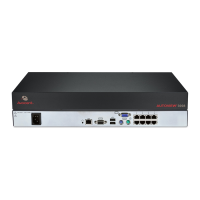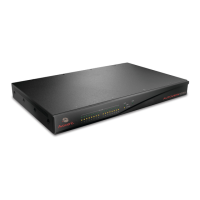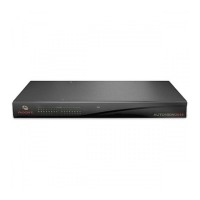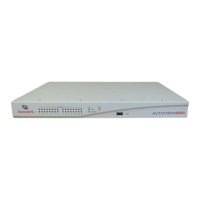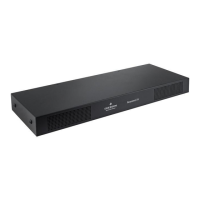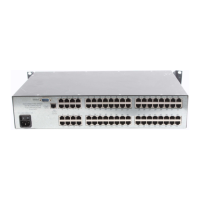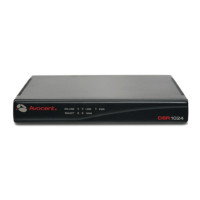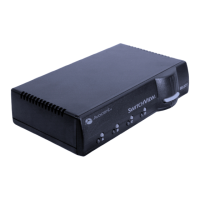
Do you have a question about the Avocent AUTOVIEW 3016 and is the answer not in the manual?
| Product Type | KVM Switch |
|---|---|
| Model | AUTOVIEW 3016 |
| Number of Ports | 16 |
| Number of Users Supported | 1 |
| Form Factor | Rack-mountable |
| Rack Height | 1U |
| KVM Port | USB |
| Interface | USB |
Details on product capabilities, including connectivity and management features.
Explains how the switch minimizes cable volume using IQ modules and UTP cabling.
Describes accessing the switch remotely using a standard TCP/IP network and web browser.
Provides a step-by-step procedure for setting up and installing the switch.
Details network configuration, including IP addressing with DHCP or static assignments.
Instructions for mounting the switch in a standard EIA rack, including safety considerations.
Guides on connecting monitors, keyboards, mice, target servers, and network cables.
Details necessary firewall port configurations for remote access.
Describes how to check Ethernet and IQ module connections using LEDs.
Details the functions of buttons and fields within the OSCAR interface Main dialog box.
Guides on viewing, configuring, and selecting target devices via the Main dialog box.
Describes the method of switching target devices using hotkey sequences.
Provides a guide to keyboard and mouse navigation within the OSCAR interface.
Details features available in the Setup dialog box for configuring the OSCAR interface.
Details how to set the keyboard country code for proper Sun server emulation.
Explains how to configure network speed, transmission mode, and IP settings via OSCAR.
Explains how to identify target devices by assigning unique names via the Names dialog box.
Details functions for managing scans, user status, and firmware updates.
Describes how to view and terminate active user sessions via the User Status dialog box.
Guides on displaying firmware versions and performing firmware upgrades for the switch and IQ modules.
Introduces the On-Board Web Interface for KVM switching and device control.
Describes the AutoView Explorer window layout and its functions.
Explains how to initiate a KVM session through the OBWI's Video Viewer.
Explains configuration options for sharing KVM sessions among users.
Guides on adding, modifying, deleting users, and setting access levels and passwords.
Explains how to view and change appliance configuration parameters via the OBWI.
Explains how to configure video session timeouts and preemption warnings.
Explains how to enable and configure SNMP for network management.
Guides on saving and restoring switch configuration and user database files.
Details how to configure LDAP for directory service authentication and user management.
Explains how to install a web certificate for secure OBWI access.
Describes the function and requirements of the Video Viewer for KVM sessions.
Details the various components and elements of the Video Viewer window.
Covers options for aligning cursors, refreshing the screen, and managing full-screen mode.
Covers options for cursor type, mode, scaling, alignment, and resetting mouse settings.
Details how keystrokes are handled when switching between local and remote systems.
Guides on saving the Video Viewer display to a file or the clipboard.
Describes accessing and using the appliance-level configuration menu via a serial connection.
Guides on setting network speed, IP addressing, netmask, and default gateway via the console.
Details accessing the Flash Download selection for firmware updates.
Describes performing a soft reset of the AutoView switch.
Details the process of updating the appliance firmware using TFTP, FTP, or OBWI.
Explains the function, modes, configuration, and pinouts of serial IQ modules.
Discusses UTP cabling types, wiring standards, and installation/maintenance tips.
Provides detailed technical specifications for the AutoView 3008/3016 switch.
Explains how to emulate Sun keyboard keys using PS/2 keyboard sequences.
Provides guidance on contacting Avocent Technical Support for issue resolution.
